I love a good checklist, especially when it involves garden chores, which are my absolute favorite! I developed this garden checklist based on past experiences, which I do not always remember when I am in the thick of attending to all my family and homestead chores.
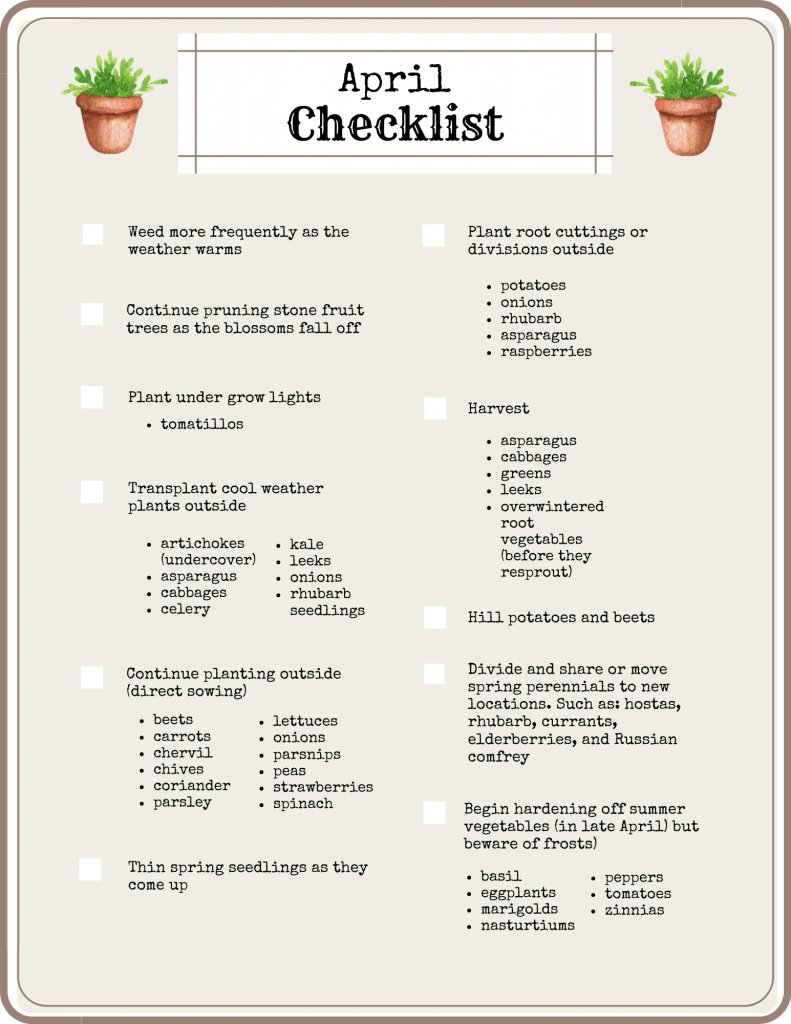
1. Early weeding
Weeding chores in the garden are a lot like housework in my mind. I much prefer weeding because I would rather be outside in the sunshine, but they both are best done regularly and consistently before the task becomes too overwhelming. I find that being very conscientious about weeding makes it a whole lot easier to keep ahead of their growth and spread. April is an essential time for hoeing over tiny weed sprouts before they become established.

2. Plant potatoes, beets, and other root crops
Let’s take a little tangent on this potato growing chore! There is a lot more to planning and planting potatoes than most people realize. To grow potatoes, you need seed potatoes. You could use organic potatoes from the store. Around 80% of regular store bought potatoes are sprayed with an herbicide (chlorpropham) to keep them from sprouting. I recommend ordering seed potatoes from a reputable seed company like Johnny’s seed or RH Shumway. They are pretty expensive, but once you find a variety that you like, and that grows well for you, you can keep some for seed from year to year.
There are three basic types of potatoes: Earlies, Main crop, and Lates. It can be a little confusing to grow potatoes for this reason. Some potato varieties take nearly twice as long to finish growing as other varieties.
- Earlies: 75-90 days
- Mid or Main Crop: 95-110 days
- Late/Storage: 120 – 135 days
“Late” season storage variety potatoes, like the heirloom variety King Harry that I’m planting again this year, still need to be planted fairly early in the gardening season in order to allow them 120-135 days of growing time. Here’s my potato planting plan for this year:
- Earlies: Superior variety; matures 85-90 days; Planted April 2nd; harvest late June
- Mid season: Red Norland variety; 90- 100 days; Planting ~ April 16; harvest mid to late July
- Late season: King Harry variety: 110-135 days to maturity; Planting ~ May 1; harvest early September.
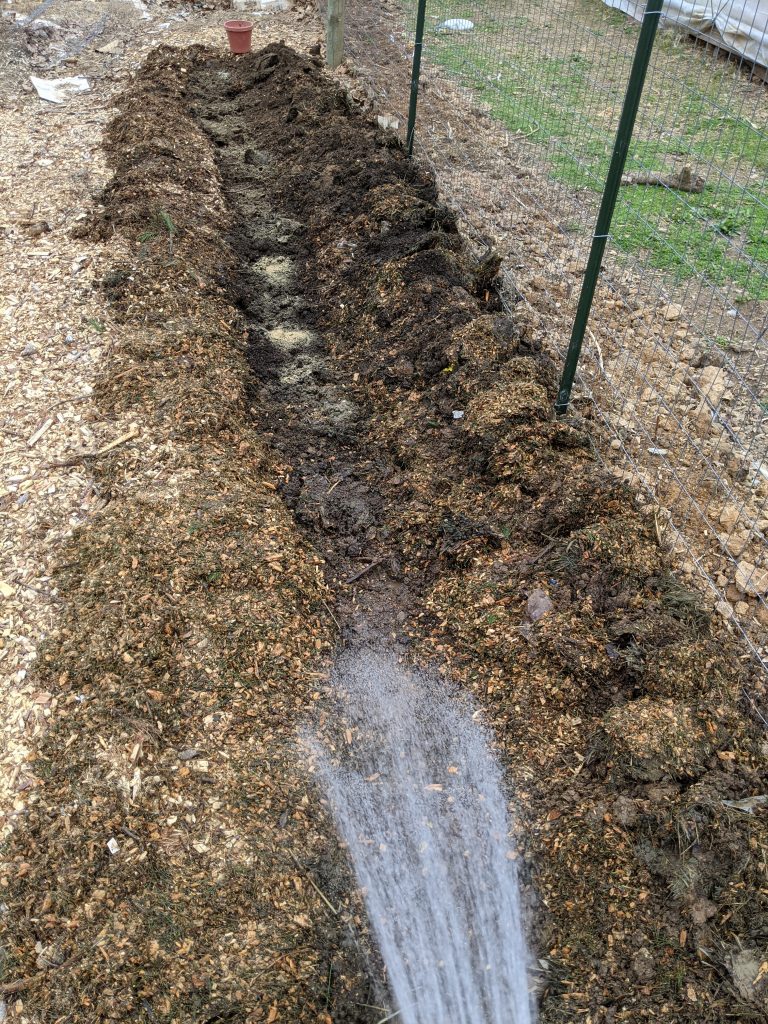
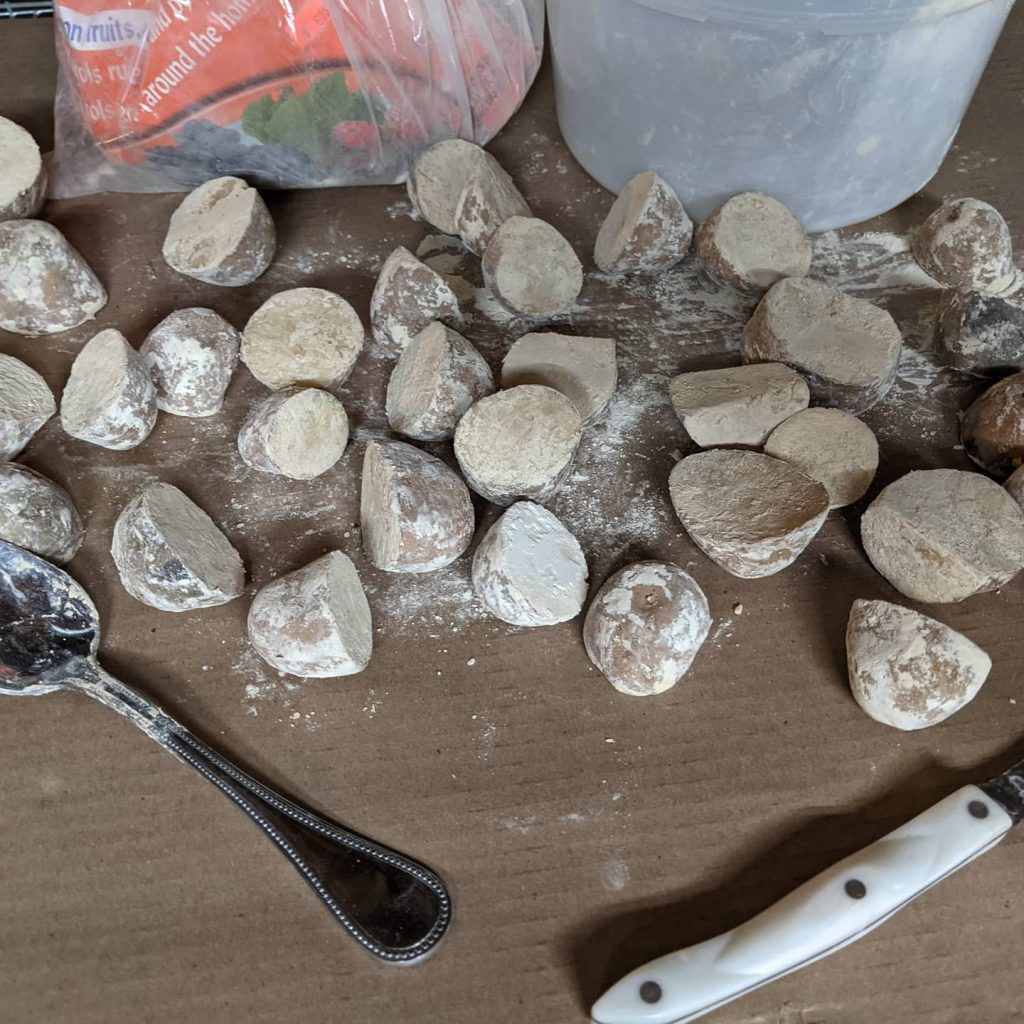
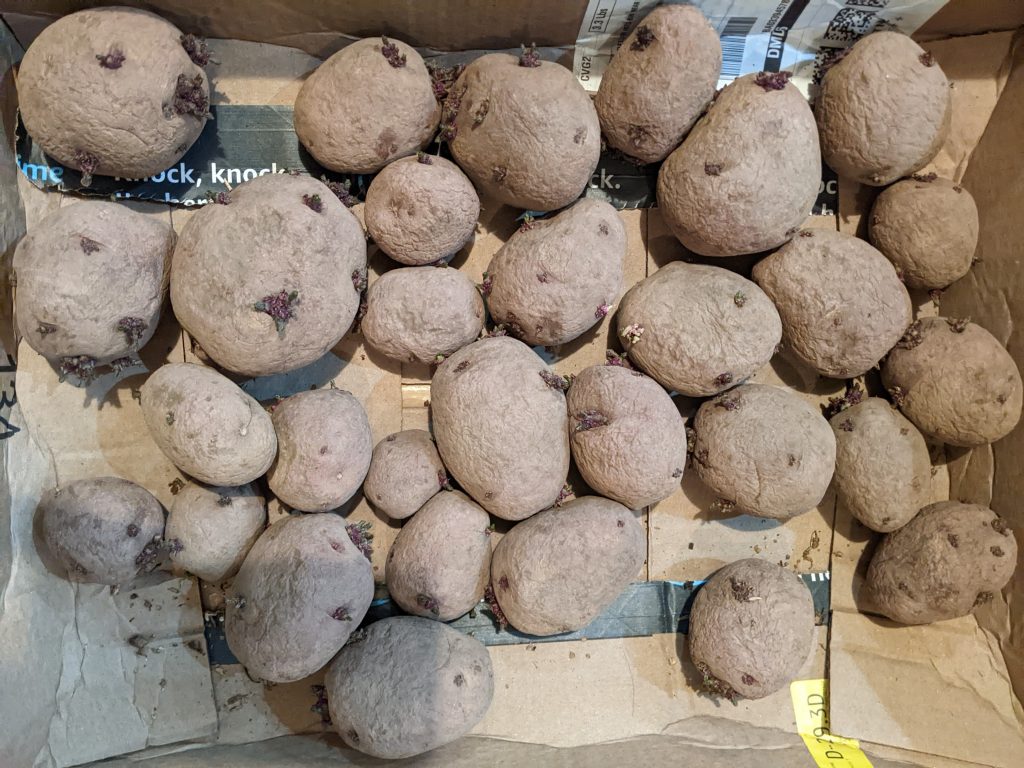
There are so many different ways to plant potatoes. And most of them work! Usually, I cut up my seed potatoes, leaving two eyes on each piece, dip them in some agricultural sulfur to prevent molding and plant them like that. However, my sister Becky (theseasonalhomestead.com) plants hers whole, and I thought I would try that this year. The idea is that if you plant the whole potato you still get the same yield. All the eyes just sprout into one big healthy plant instead of several. It is a lot simpler not to have to cut up the potato. I have been letting them “chit” this year also, which I don’t always do. Chitting is when you purposely encourage them to sprout by exposing them to light for a week or two before planting.
3. Divide, move, share, and replant spring perennials
Many perennials perform better when divided every 3-4 years. Rhubarb, raspberries, elderberries, comfrey, and hostas are plants that I have had an easy time dividing and sharing. Rhubarb and hostas are best divided when they first come up in the spring. I like to lift the plant out a little by digging around it so that I can see all sides of the root ball and then slicing it in half vertically with a sharp shovel or machete.
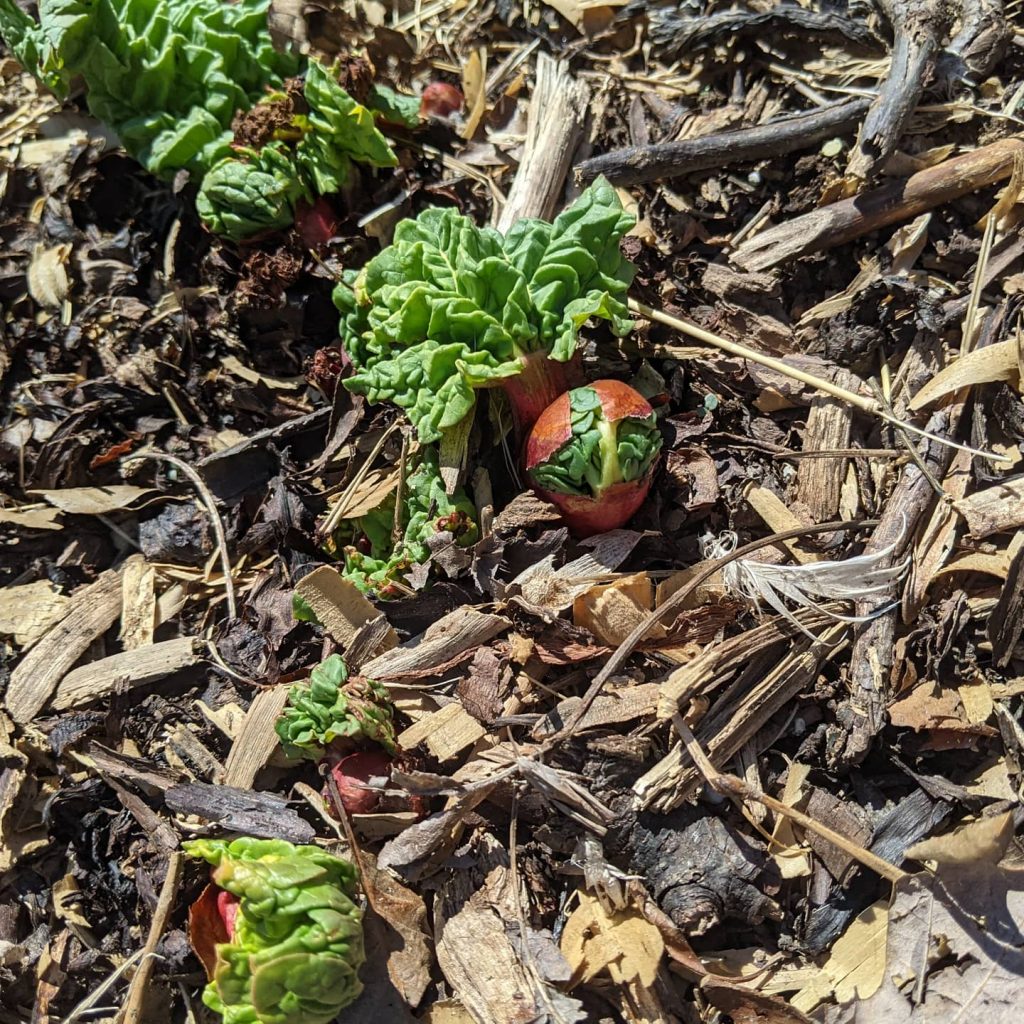
Raspberries, elderberries, and currants send out roots that pop up a little way from the parent plant. Those can be dug up and disconnected from their parent plant with a foot or so of the root shoot attached.
4. Begin hardening off summer vegetables (careful of frosts!)
I harden off plants on my front stoop. It is has a south eastern exposure and a few trees for dappled shade. I find it works perfectly to give seedlings an hour of morning sun and then gradually increase by an hour or so of sun exposure every other day.
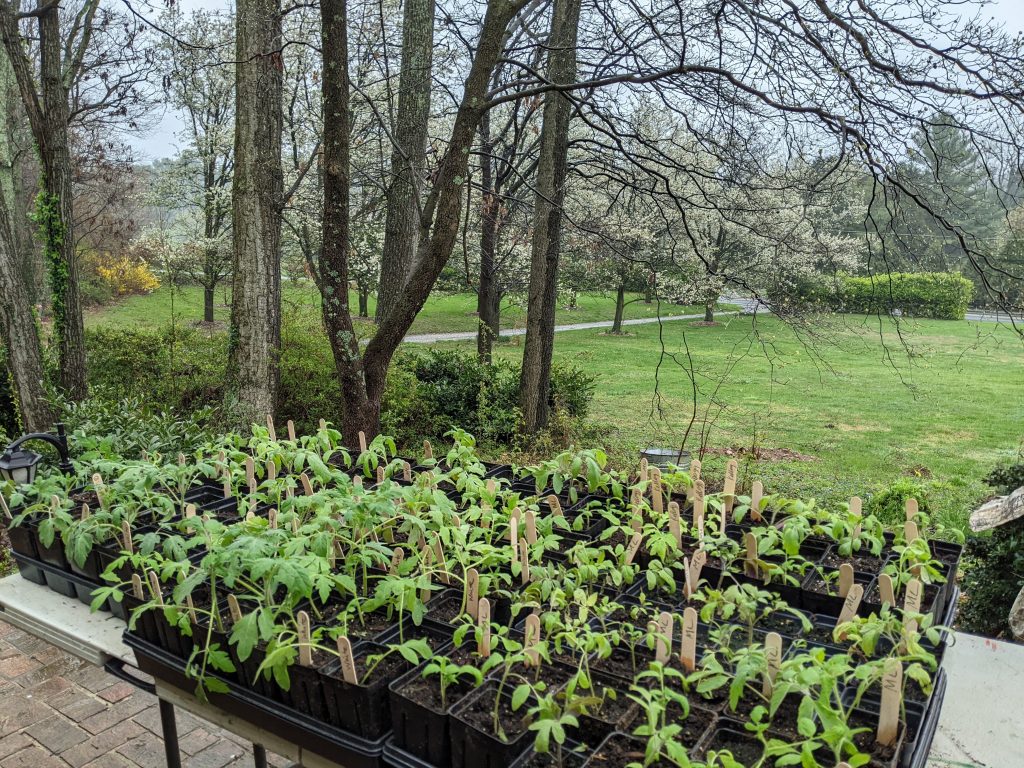
It’s important to be prepared to bring in any seedlings that are hardening off in case of frost warnings. I sometimes anticipate an early spring and then have to bring in 50 trays of seedlings on a couple nights… I still think the early start is worth the effort.
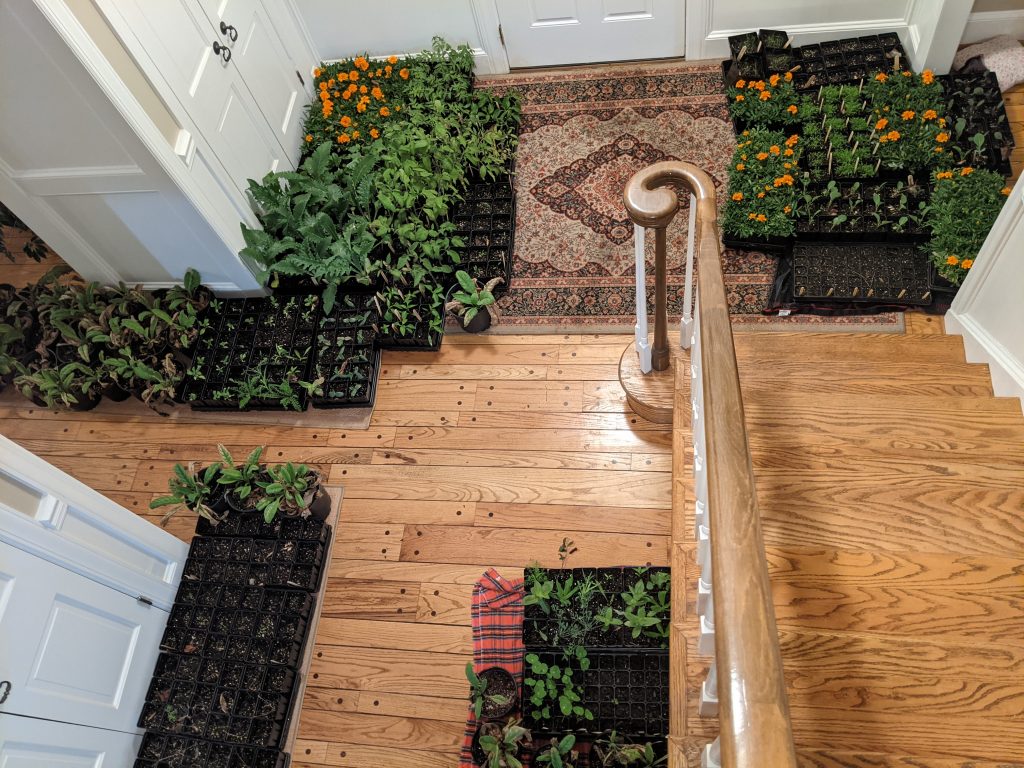
5. Harvest and enjoy spring greens
Early spring is the richest time of year for nutritious tender greens. Lettuces and other garden salad greens can be enhanced with common “weeds” such as violet leaves and blossoms, chickweed, and dead nettle. Green onion shoots, stinging nettle, and lambs quarters are wonderful with eggs in quiche or cooked in soups.
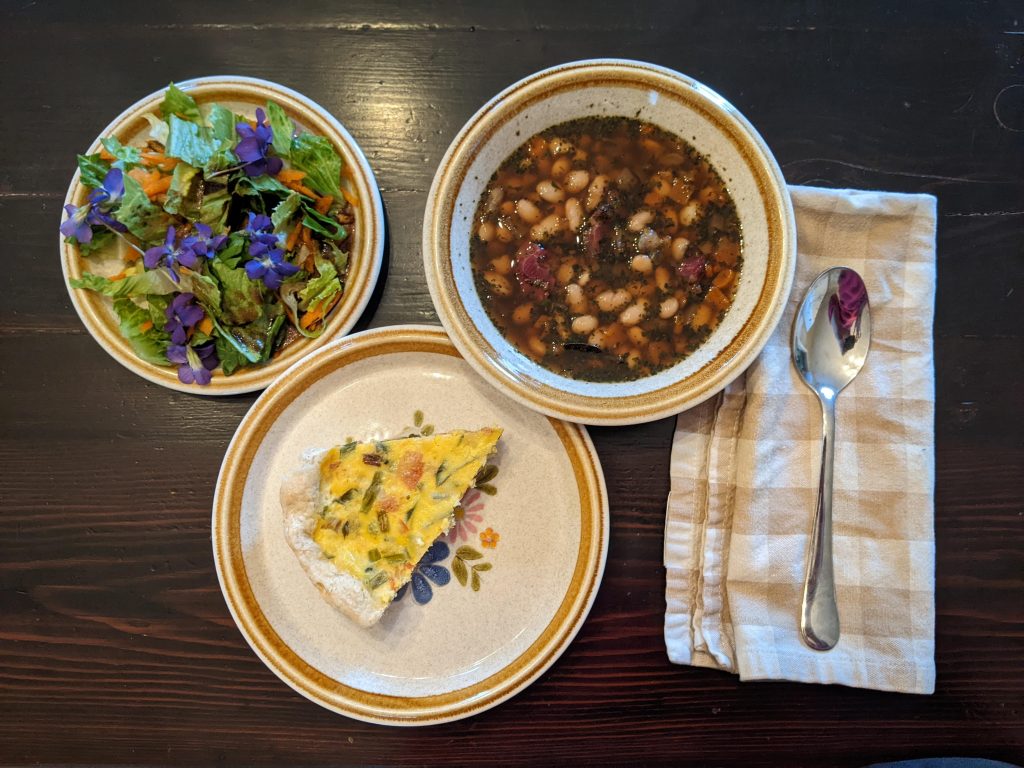




Leave a Reply